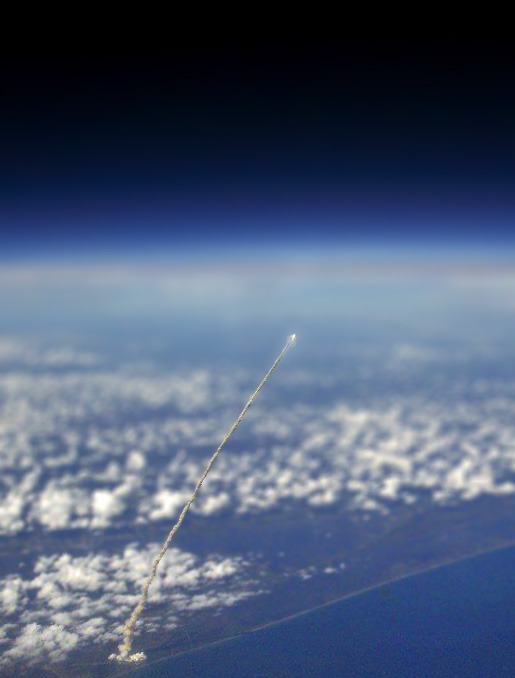
Photo: Tom Meyer. Rockspinner: Public Art Archive
If I could have included a video of the older gentleman on the corner of tenth and Peachtree street pushing the boulder there upon its axis, I would have. But seeing as how I can’t seem to remember my phone from time to time–an admittedly good problem to have in the twenty-first century–I was unable to capture his secret moment of bliss. You could tell it was bliss to him even though he wasn’t smiling. He was, in fact, quite methodical in his movements. His tastefully checkered blazer didn’t wrinkle or give into the whipping wind as he moved. He just calmly outstretched his arms and proceeded around the boulder-made-art-installation about four times. When the light turned, I drove and he continued his circle, walking quite calmly into the sidewalk parallel to my lane upon his release.
The visual.
That moment was gestural and also quite a bit more revealing than the simple “hello, how are you?” that we’ve gotten so accustomed to replaying to each other. Though we communicate verbally and spend a lot of talking to each other about what he or she said, there is quite a lot more that happens between us physically or, to use a less provocative term, gesturally.
Nick Sousanis, author of Unflattening, a graphic novel about how image and arrangement have the power to instruct alongside the linguistic, supports this thinking. His novel is the first dissertation to take the form of a graphic novel, and Sousanis, when asked about how that came to pass on “Blog Talk Radio”, admitted to thinking no great thing about it.

Unflattening by Nick Sousanis on Amazon.com
At the time of his acceptance into the program, he expressed his intention of producing this type of dissertation, so turning it in was not as much of a struggle as we might think. His novel supports the concept of multimodal literacies, a notion coined by the New London Group that says there are six different ways that we create meaning.
The graphic explanation of these meaning generators and multimodalities are penned by Aaron Scott Humphrey in “Multimodal Authoring and Authority in Educational Comics: Introducing Derrida and Foucault for Beginners“. Here is another believer in the combined power of the physical and the verbal to create meaning. In the very argument for the effectiveness of the visual, the verbal, the gestural, the spatial, and the multimodal alongside typical linguistics in teaching, he uses those components to make his case. He does this by presenting his argument in graphic novel form.

www.digitalhumanities.org Aaron Scott Humphrey
Sousanis does the same in Unflattening, but it happens again when his interview appears on Blog Talk Radio online. There is an audio clip at the top that contains some linguistic content, a website formatted with ads, toolbars, a comment section, and “share” links for other pages. There is also a consistently running slideshow of a few of Sousanis’ images on the site. Each modality is arranged spatially alongside the verbal and the visual to complete the project. In other words, the Sousanis interview, his actual graphic novel, and Humphrey’s graphic explanation of multimodal authoring all use the very methods that they promote to convey meaning.
All of this discussion about the spatial, the multimodal, and the visual immediately brought me to a place where I considered dance and gesture in online spaces. How am I to capture, for example, the older gentleman pushing the boulder and the moment in which that occurred multimodally? This moment–me in my car and him pushing the boulder–was, after all, a dance. It was a moment in time infused with meaning-rich gesture, whether that meaning was intentional or not. Could there be a way to bring gesture into a multimodal sphere like Sousanis and Humphrey did? Could we teach through the gestural and visual online even through dance? Furthermore, is there a way to do this that does not only mean videos of dancers on the screen? If we were to perform such a marriage between image, form, language, and gesture, we would need to think as Sousanis suggests we need to think in his interview when he references Flatland by Edwin Abbott.
“And they know how to move east and west and south and northwards, but they have no idea of upwards. They can’t conceive of anything off the plane, and i think that became a founding question for me. Like we can look down on them and say ‘oh, that’s silly’ but what about looking from some other dimension at us? What are those spaces we don’t know how to step into and that we don’t even know they’re there to think about stepping into them?”
http://yungcosmonauts.tumblr.com/

Leave a Reply